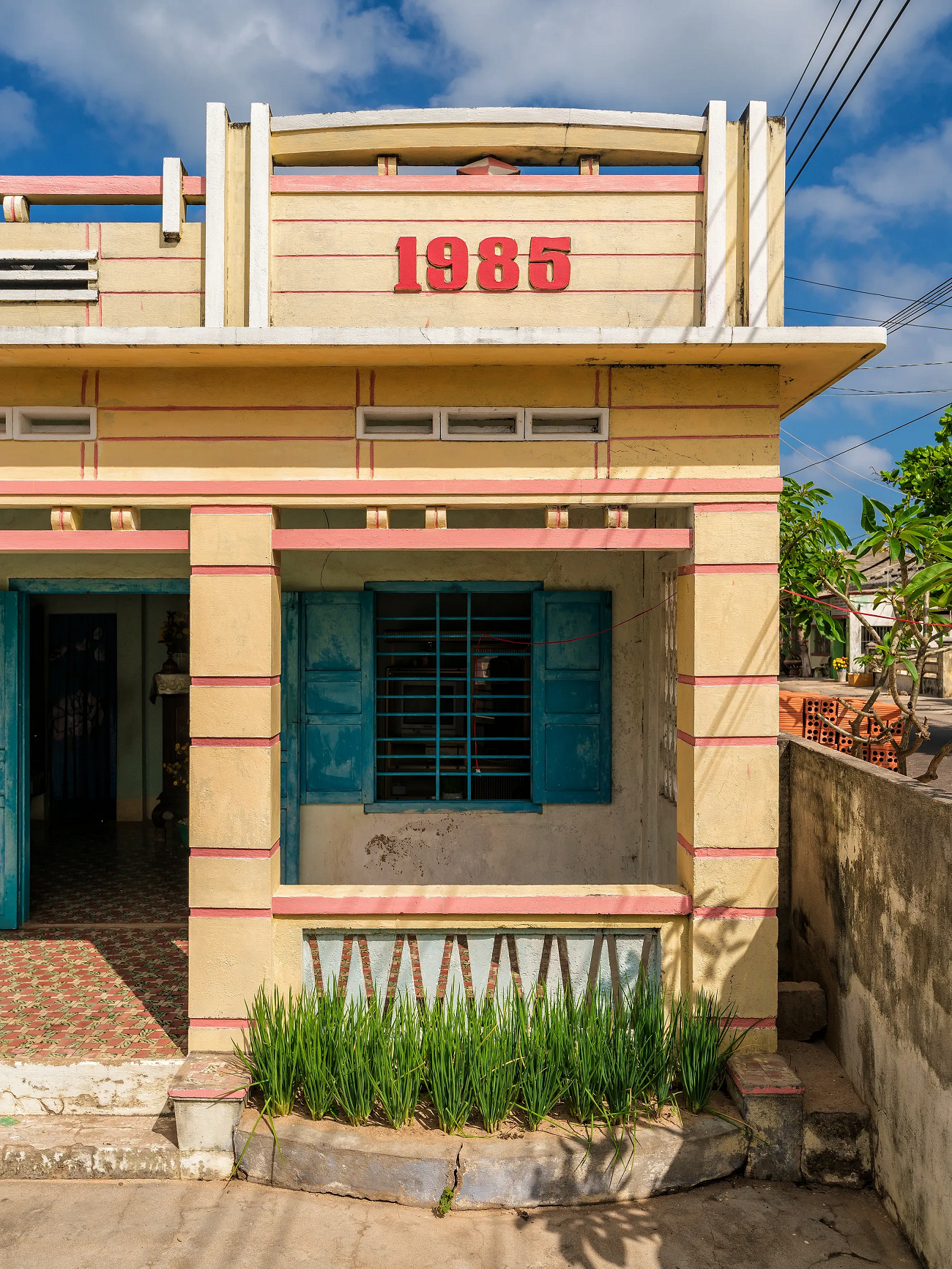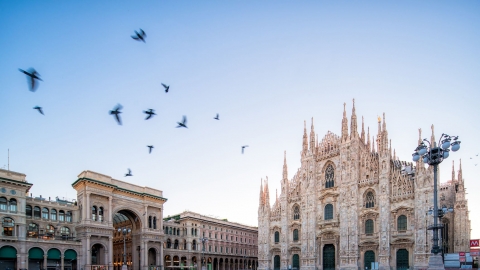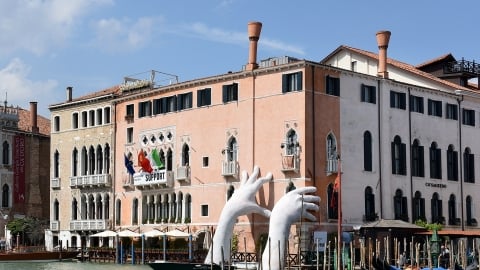Phu Quy is an island district of Binh Thuan province, about 100 km from the capital Phan Thiet. This place possesses a pristine and rich ecosystem, and people's lives still retain many traditional and rustic features, instead of being caught up in the attractive whirlpool of the tourism industry.
During the French colonial period, Phu Quy was known as Poulo-Cécir-de-Mer (Isle of the Sea). Today, Phu Quy is an ancient island with about 30,000 inhabitants, the only place in Vietnam where high school graduates must take a boat to the mainland to take the university entrance exam.
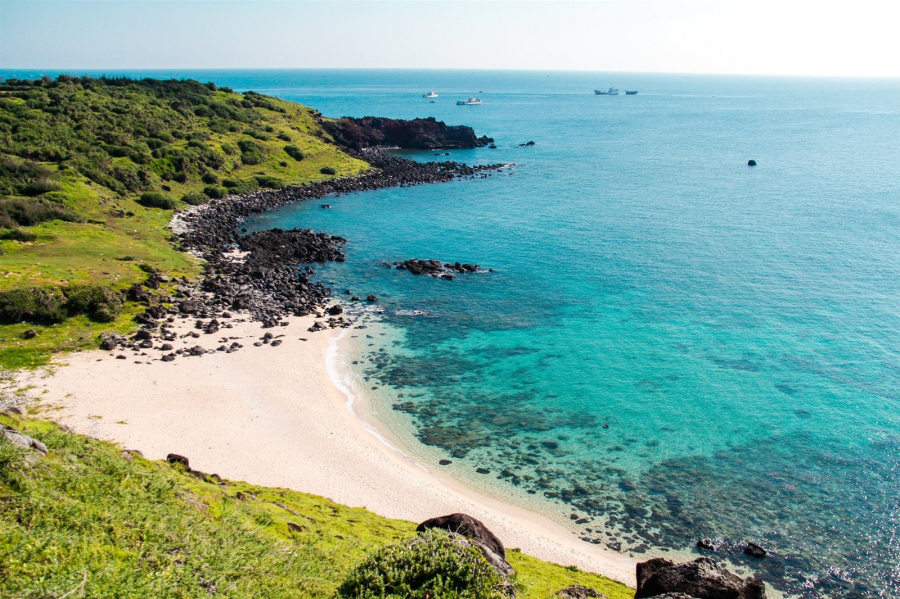
Beach in Phu Quy - Photo: Internet
Besides the landscape advantages, one of the most unique features of Phu Quy is its architecture. Along the roads in Phu Quy island district are one-story houses located next to each other, almost all of which have bold modern architecture in the mid-20th century.
20th century imprints in houses
The houses here, though considered “modern architecture” because they are made of industrial materials, do not show the principles of modernism. Instead, they seem to have been created based on emotional decisions. It is this contrast that reveals the Vietnamese cultural characteristics in architecture.

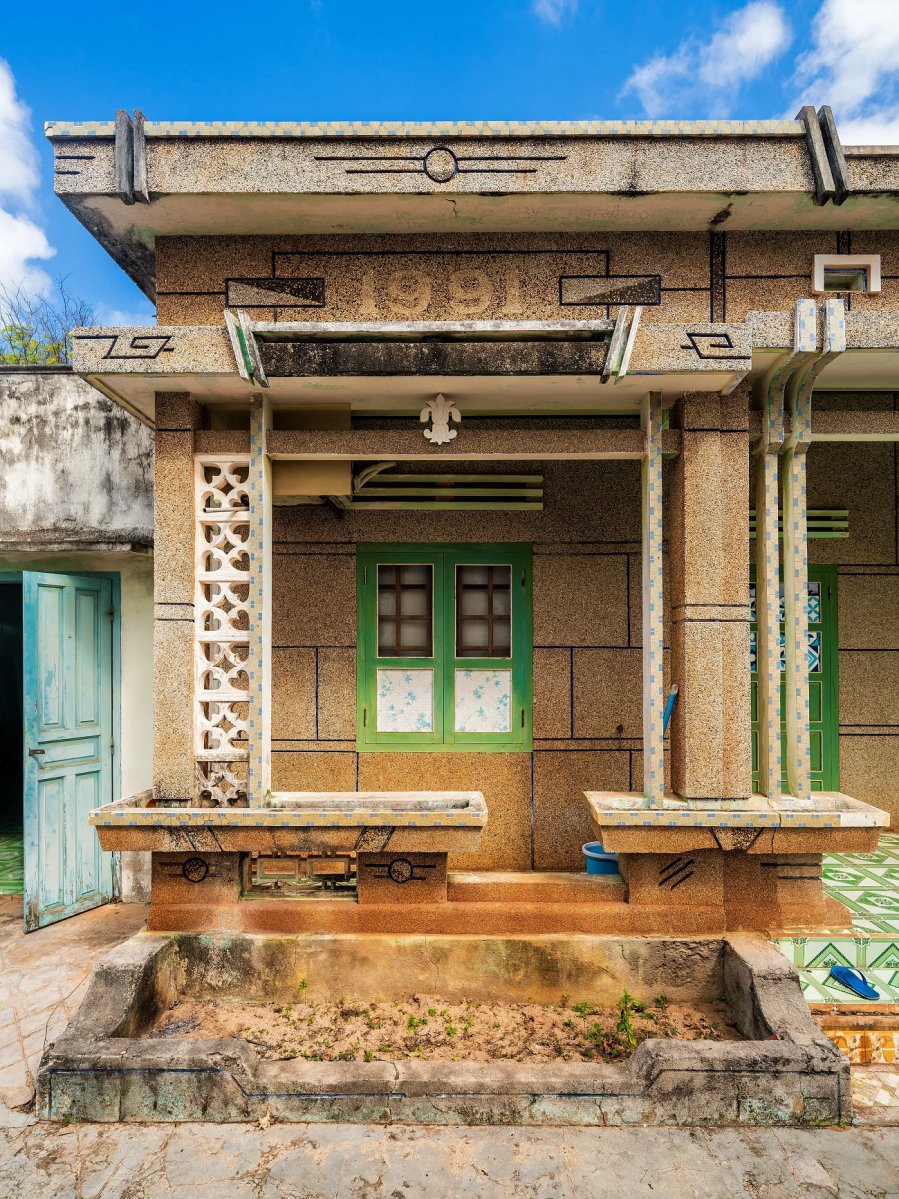
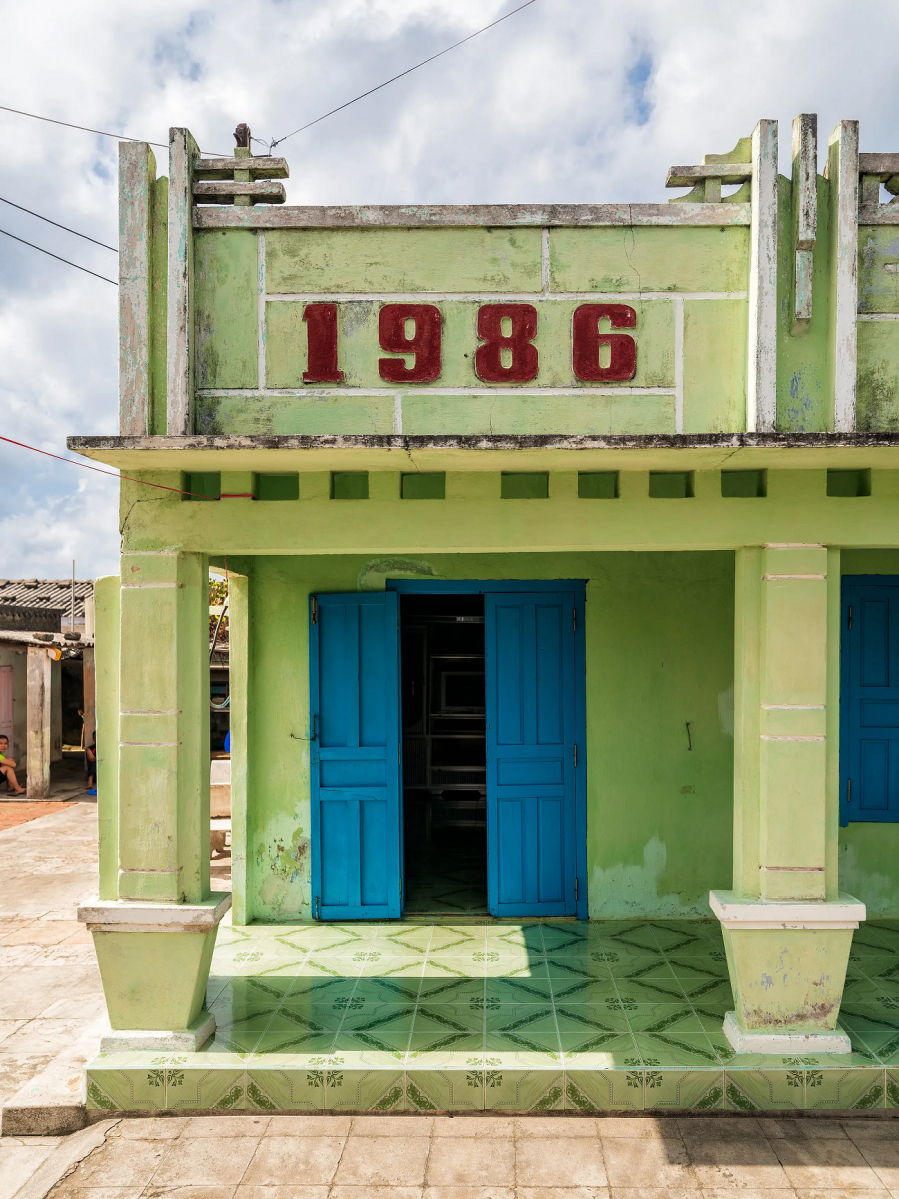
Houses in Phu Quy use washed stone to cover the outside of the pillars and facades, geometric ventilation blocks, designs and decorations with strong personal imprints such as stylized railings, flower beds, sunshades, wind flowers, iron door frames, climbing frames, etc. All are the most common features in the modern architectural movement of Vietnam, but bear the mark of the country and go beyond the boundaries of global modernism.

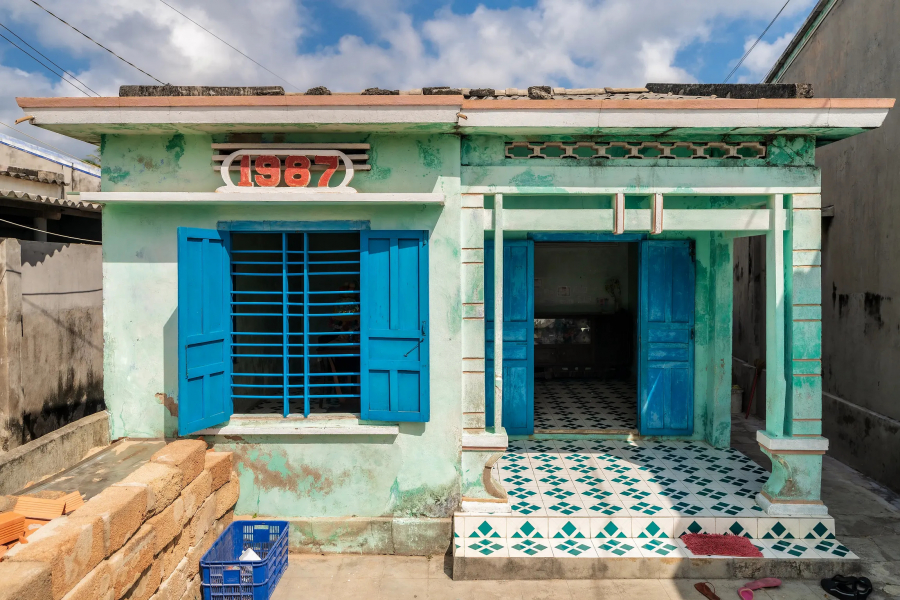
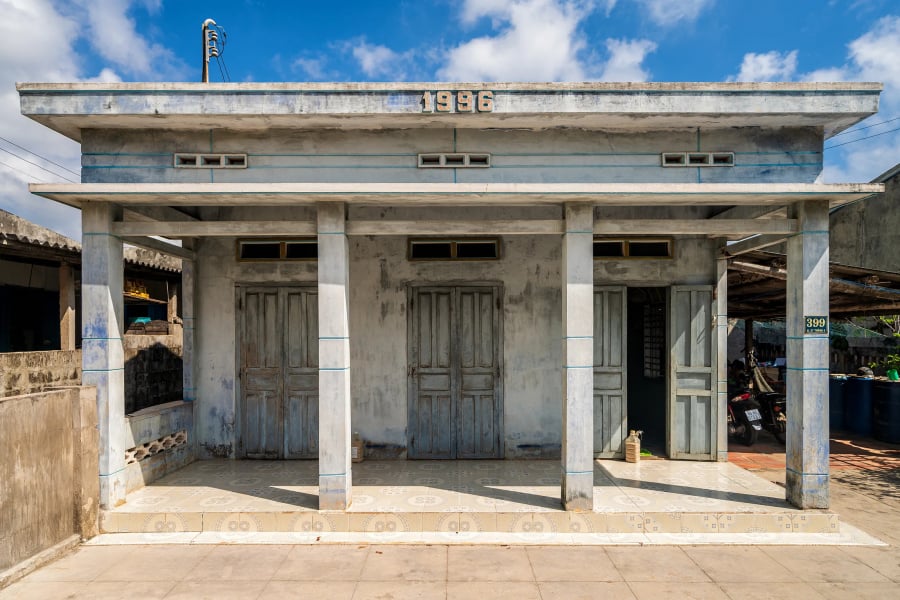
and its own aesthetic traits
However, the modern houses on Phu Quy Island also have their own aesthetic marks. The most prominent feature is probably the carving of numbers on the facade of the house, as a way to remember the year of construction. The numbers range from the early 1970s to the late 1990s, although most of these houses seem to have been built in the 80s and 90s of the last century.
According to Mr. Pham Phu Vinh, researcher and author of a book analyzing modern Vietnamese architecture, adding years to the design of houses can be purely for aesthetic or emotional reasons to celebrate the "birthday" of their beloved home.

“The numbers may be just for decoration, but I think their appearance also shows the strong development of modern architecture in the locality,” he commented. “In the mid-20th century, Saigon residents had higher financial capacity to build houses, but in the countryside it was very rare. Therefore, houses in the countryside have a deeper value to the owners because they probably had to work all their lives to build a house.”
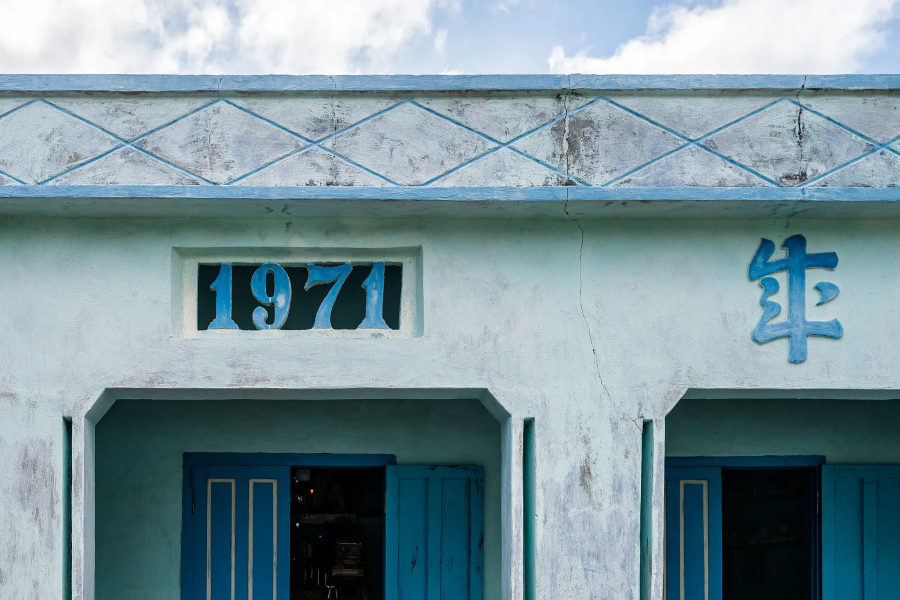
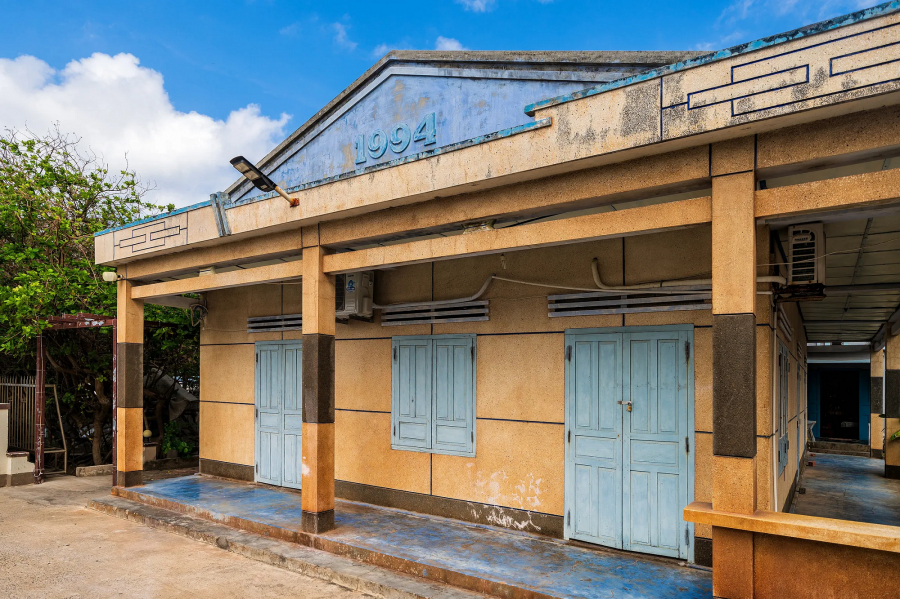
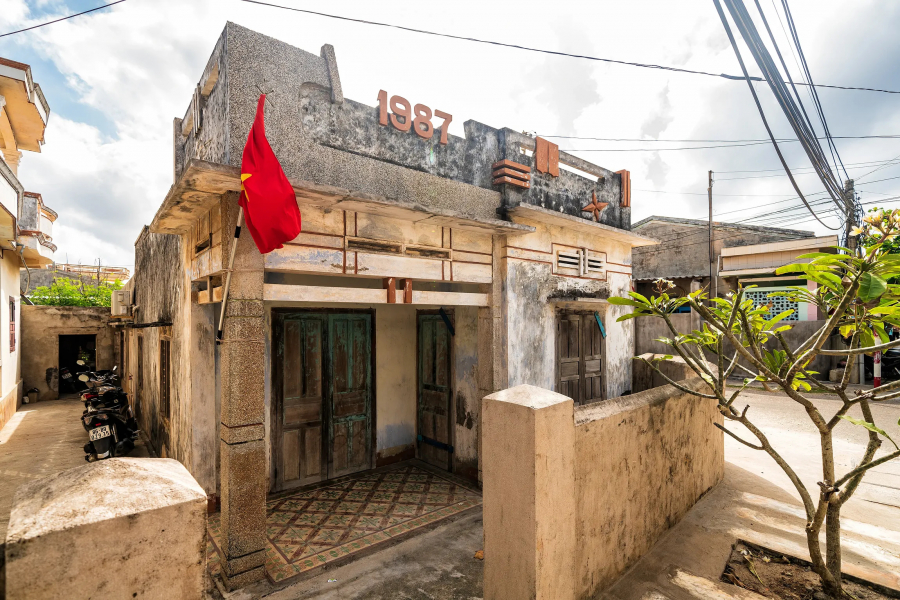
It was not until the late 20th century that residents of the suburbs and rural areas of Vietnam could afford to consider building a house. Therefore, the houses on Phu Quy Island also have some differences compared to the houses built in the 50s and 60s. Although still influenced by mid-century modern architecture, there are some structural variations, such as the increase in decorative elements, the use of more materials than washed stone, and the use of fonts.seriffor numbers, insteadsans seriflike previous decades.
Mr. Vinh believes that during this period, the appeal of Western modernism gradually decreased compared to the 50s, 60s and 70s, so raw materials began to change.
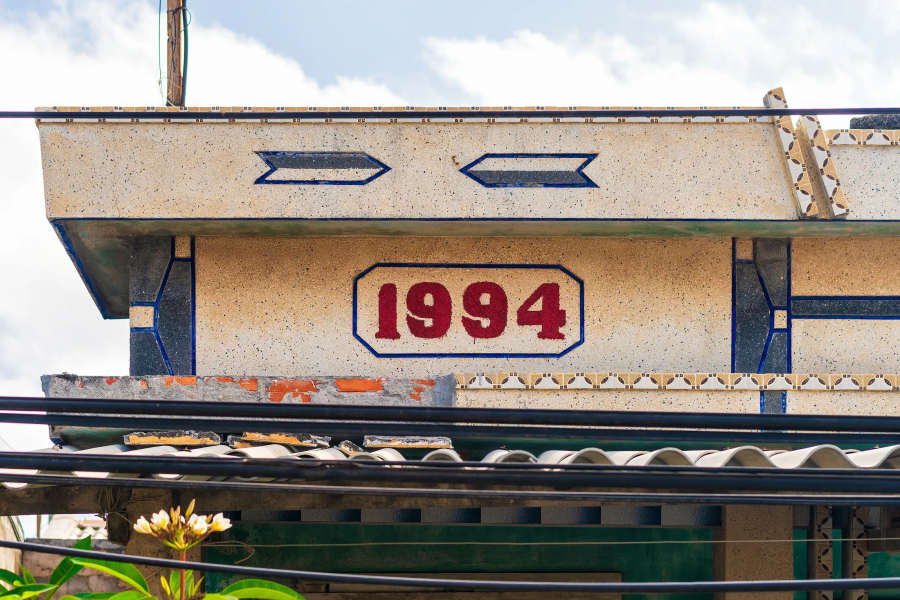

In fact, there is no formal set of rules governing the construction of modern-style homes. For decades, contractors and homeowners have been free to design their homes however they wanted, using the best available materials and satisfying their personal tastes.
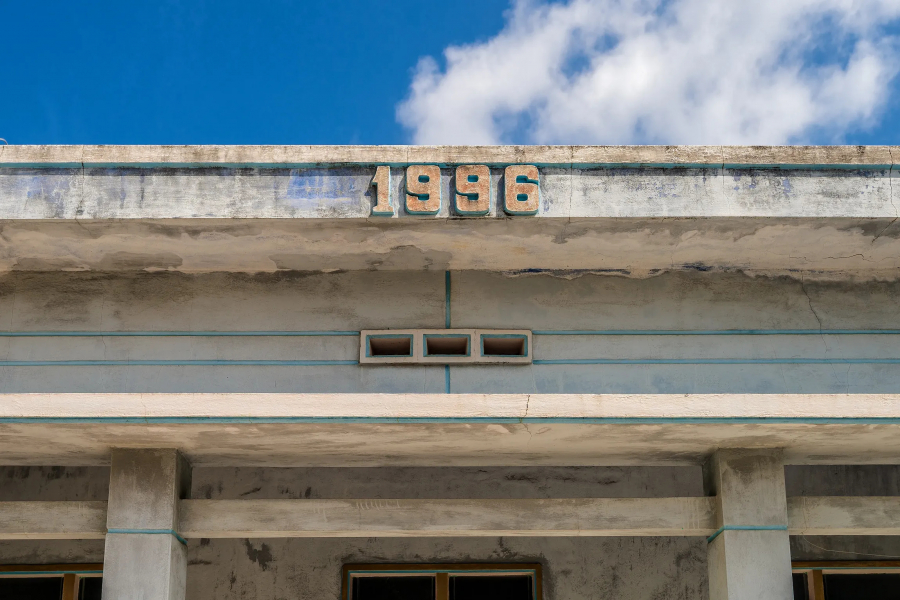
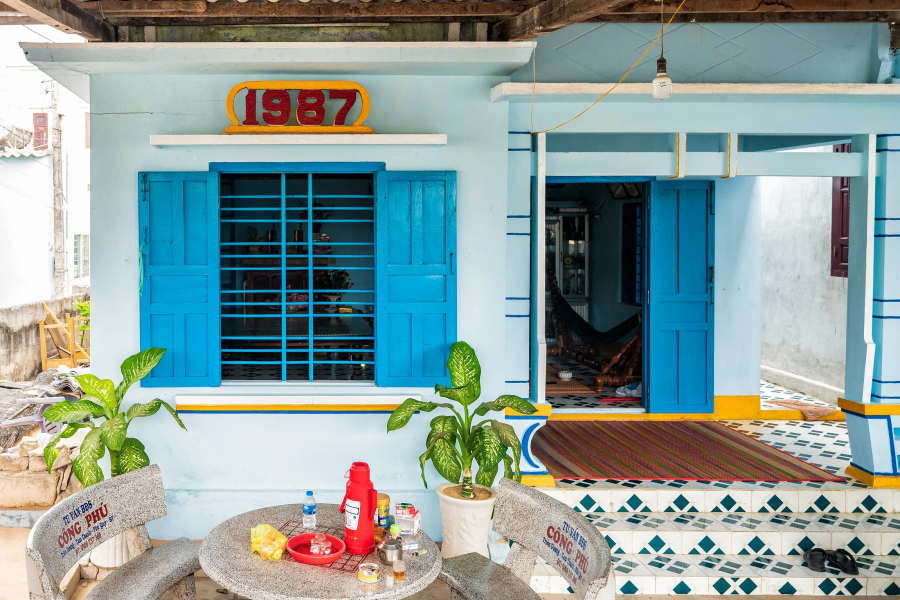
In Saigon, there are a few areas where houses built during the same period are more consistent in style and tend to resemble the surrounding neighborhood. In the far south, such as on Phu Quy Island off the South Central Coast, separate "complexes" of houses have their own unique character compared to modern Vietnamese architecture from the middle of the last century.
These changes in the architectural styles introduced into Vietnam reflect the values of the new Vietnamese, the modern Vietnamese. That the Vietnamese have not only passively accepted a new architectural genre, but have also actively transformed their architecture by assimilating new values, with their own personality and character.





